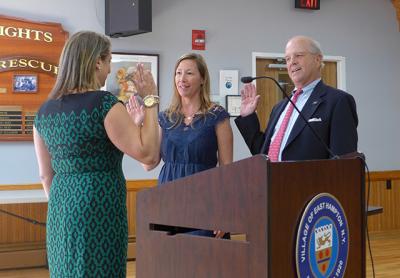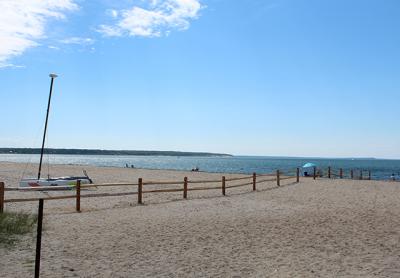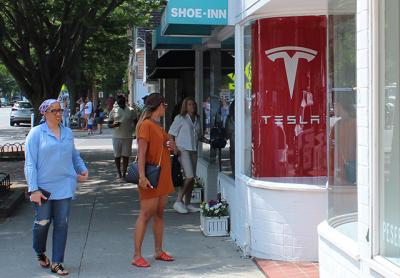William Barber's Fiery Call to Moral Action
William Barber's Fiery Call to Moral Action
The marches and rallies that have sprung up since Donald J. Trump was elected president have brought together disaffected Americans who in the past would have been called liberal thinkers and who for the most part have supported movements for marriage equality, women’s rights, gay rights, and L.G.B.T.Q. rights.
In East Hampton on Saturday a lesser-known movement for a Third Reconstruction was advocated by the Rev. Dr. William J. Barber of North Carolina, who in impassioned oratory called for “an understandable moral agenda” fusing with the Poor People’s Campaign, which the Rev. Dr. Martin Luther King Jr. initiated in 1968.
“The Third Reconstruction: How a Moral Movement Is Overcoming the Politics of Division and Fear” is the title of Dr. Barber’s book, copies of which were sold on Saturday at a political gathering in Northwest Woods during a program that included upbeat singing by the Thunderbird Singers of the Shinnecock Indian Nation and a talk and performance by Peter Yarrow, of Peter, Paul, and Mary fame. Before the afternoon was over, partygoers joined him, singing “If I Had a Hammer.”
Dr. Barber is an activist preacher who is said to be walking in Dr. King’s shoes; his speech made that clear. He spoke with passion and at times anger, modulating his emotional voice from soft to loud as he called health care a right and decried poverty and war. His overall message was that right and left, black and white had to come together to create another Reconstruction.
Dr. Barber had a wide focus on this country’s ills and pulled no punches about what he said was “systemic racism.” Every country the United States has fought in the last decades is brown, black, and Muslim, he said. As for the federal policy that separated children from parents, which he called “hijacking,” he said, “Those are not children. They are brown children.”
Given that the First Reconstruction followed the Civil War and that the civil rights movement of the 1960s and ’70s is considered the Second Reconstruction, announcing that a Third Reconstruction is already underway seemed to be news, although in Washington, at the National Museum of African-American History and Culture, a new exhibition is titled “City of Hope: Reconstruction City and the 1968 Poor People’s Campaign.”
In East Hampton, Dr. Barber, a religious man, said there was no messiah. “We have to do it ourselves. Get your boots on.”
Barbara Layton, the East Hampton woman who put Saturday’s program together, had brought Dr. Barber here. She drew a local and second-home crowd by reaching out to various churches and groups and Lucius Ware of the eastern Long Island branch of the N.A.A.C.P. She also called on Julie Ratner to be host. Ms. Layton had worked for a number of causes in the past, she said, but would now concentrate on bringing people together.
“We have to step out of all our individual distinct silos,” she said. “The work is just beginning. It’s time for a brand-new story.”





